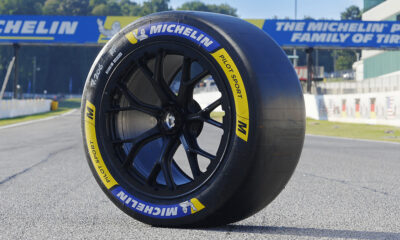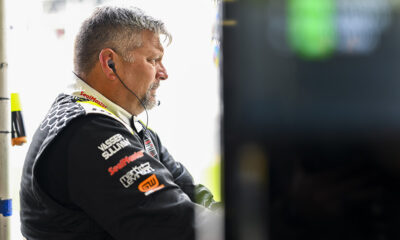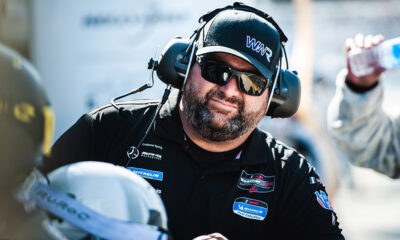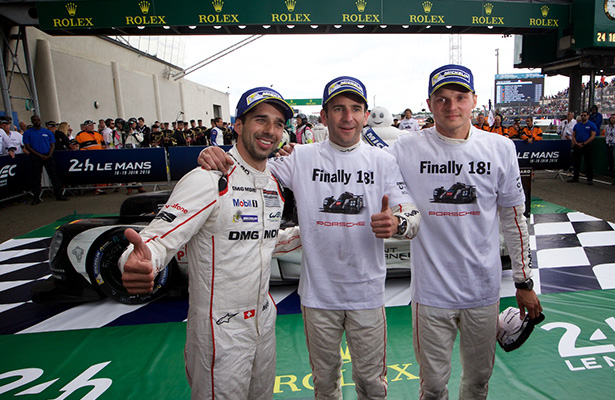
Photo: John Dagys
Fresh from its 25th overall victory and 19th consecutive win at the fabled 24 Hours of Le Mans, Michelin and its motorsports technical team arrive at Watkins Glen International with fresh memories.
Yet, ironically, for all of Michelin’s wins and championships, it is typically the races that didn’t go exactly to plan that they remember most.
One of the secrets to Michelin’s technical prowess and record of success is that it tries to remember and document every lesson learned, no matter how difficult the process.
Or, as Chris Baker, director of motorsport, Michelin North America, says of such lessons, “You can’t un-ring a bell.”
“It’s easy to take a lot of things for granted, but lessons aren’t always learned in a constant, steady progression,” said Baker.
The Right Tires
Sometimes the lessons aren’t even related to the performance of the tires.
A trailer believed to be loaded with wet tires was opened on a rainy race morning at Road Atlanta and found to be filled with slicks instead.
Michelin quickly retrieved an earlier generation of tires from a regional warehouse just as the rain stopped. But it was a big reminder to never take anything for granted.
Michelin instituted new steps to confirm and validate tire supplies at each stage of the order, shipment and arrival process.
“We have even had lessons on the high side where we delivered more grip than a car was set up to handle,” said Baker.
One new technical partner broke a prop-shaft and driveline in its first test when the Michelin tires provided dramatically higher levels of lateral and longitudinal grip than the team’s former tire partner.
“We learned that we need to have a detailed data exchange before we even mount a set of tires,” said Baker.
“We all learn from our experiences and the more challenging the experience the better the lessons are remembered,” said Corvette Racing program manager Doug Fehan.
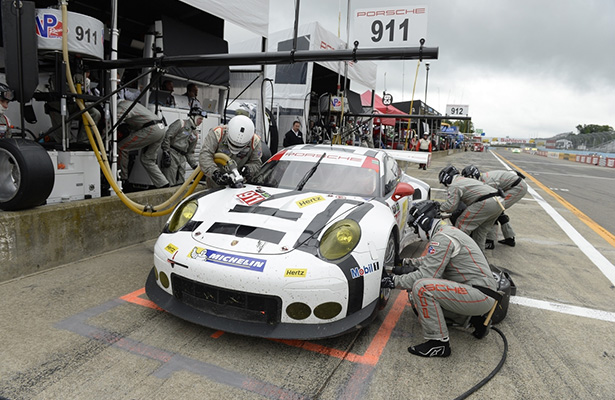
Photo: Michelin
You Can’t Win Them All
“If you race in open competition, then you must accept that sometimes you are going to lose,” said Baker. “You have to recognize that at a certain point in time someone else may do a better job.
“When that happens we do two things. First, we congratulate the guys that won. Then, we work even harder to analyze where we lost out.
“It may have nothing to do with the tires. It may be a race strategy that didn’t play out, or someone else rolled the dice and won, like here last year.
“Crashes, a penalty, a bad pit stop, or a yellow at the wrong time can all cost races, but sometimes you just get beat.
“For a long time it seemed that our teams were extremely reluctant to split their race strategies. When all of our cars are on the same strategies it leaves them vulnerable to a counter-move, but each team runs its cars separately.
“Today the competition in the IMSA WeatherTech SportsCar Championship GTLM class is so tough that teams are taking different options.
“If they are mid-pack, they will take some chances on strategy or tire options to improve track position or avoid a late pit stop.”
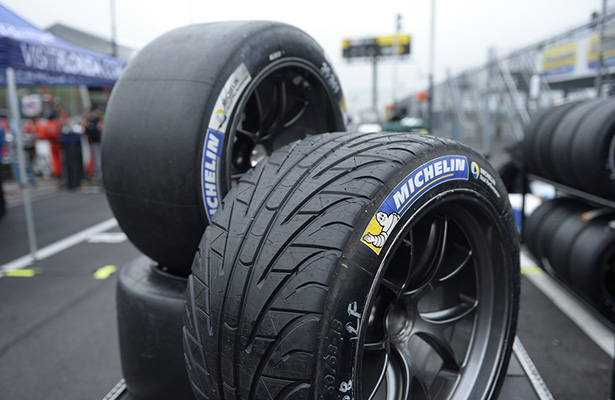
Photo: Michelin
Lesson Learned at The Glen 2015
“Last year at Watkins Glen we decided to try our ‘hybrid’ slick, which is designed without treads or grooves specifically to use in damp and drying track conditions,” said Baker. “It has been a very big success at Le Mans and in the WEC series.
“The conditions here [in the U.S.] are very different. Le Mans gets brief showers and the track dries fairly fast because it is a flat track on crowned public roads.
“Here with the elevation changes, it takes a long time for the track to reach that transition point. The water runs down the hills and puddles up at the bottom or on the downhill side of a corner.
“With steady rain, it was just too wet for that option and in the end; Derrick Walker and his team rolled the dice on fuel strategy and beat us.”
The next wet race was the 2015 Petit Le Mans at Road Atlanta.
Michelin stunned the crowd by winning the race overall as a Porsche 911 GTLM and a BMW Team RLL finished 1-2 overall, fitted with the latest Michelin WEC wet tires.
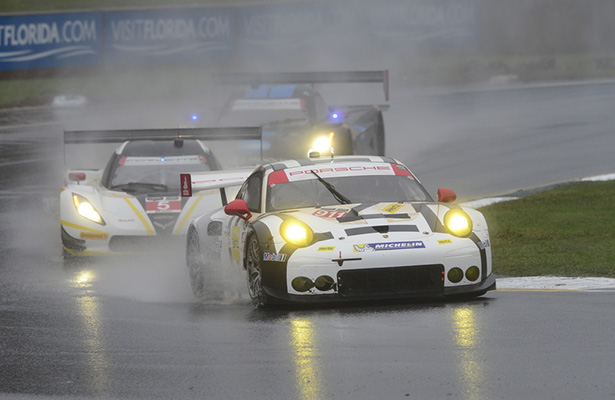
Photo: Michelin
Expectations for The Glen 2016
Sometimes knowing what you don’t know is almost as important as what you do know.
“This year at The Glen we have a newly resurfaced track for the Six Hours,” said Baker. “We know from testing that the track is very fast.
“Our experience tells us that that new surfaces typically run hotter than the old surfaces.
“What we don’t know yet is what the track temperatures will do over that span of time or how the grip level of the track will evolve over the weekend and during the race as more rubber gets put down.”
Continuity
“One of the best things about continuity is that you can build upon your base of institutional knowledge,” said Baker. “Since you can’t win tomorrow’s races with yesterday’s technology, we are constantly pushing our development.
“One advantage of having an engineer embedded with each of our technical partner teams is that we can quickly identify any outliers or data points that are beyond the normal range.
“Racing at this level, with full on factory teams, our technical partners expect us to deliver. Once we find unique situations or combination of circumstances or factors we try to break them down and learn something new.”
At the recent Le Mans 24 Hour race, Michelin GT teams had the option of two wet tires with a common tread pattern.
The difference was in the tread compound temperature range in which the tires operate.
“If the track is wet, the tires stay fairly cool and can last a long time,” said Baker. “When the track starts to dry, tires can build temperatures very quickly and that accelerates tread wear.
“Unlike Le Mans, tire warmers are not allowed here in IMSA. In the full wet, it takes a lot of time to build both the tire pressures and the temperatures up to the proper operating range.
“During that initial period, the car is a handful to drive and every time there is a safety car period the tires cool again.”
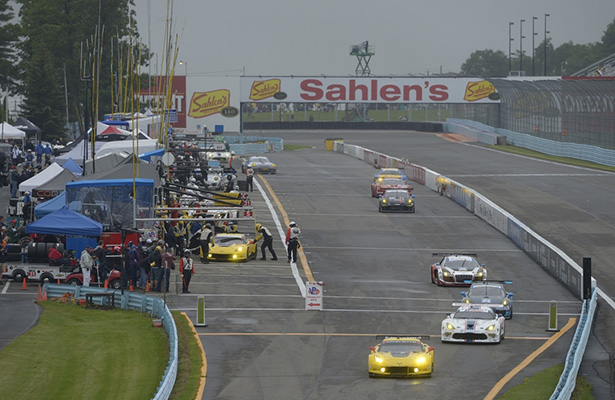
Lessons For All
Michelin is not the only one to remember its key lessons.
Heading into the Sahlen’s Six Hours of The Glen, Corvette Racing leads the WeatherTech Championship in the GTLM class with victories in the first two races in the Patron Endurance Cup, the Rolex 24 At Daytona and the Mobil 1 Twelve Hours of Sebring.
“One of the biggest lessons in the history of the Corvette Racing program was that we needed to make the switch to Michelin (2004) and we’ve never forgotten that one,” said Fehan.
“And neither have they.”




















